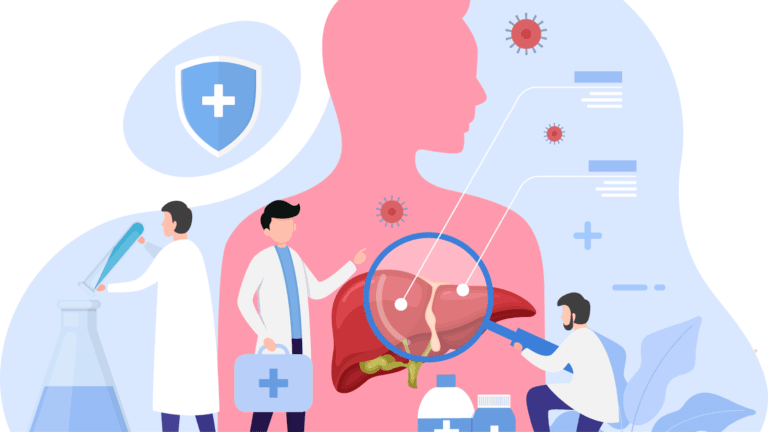
Berdi
urinary Track Health
Do you dread bending a little, climbing a few steps of stairs, or even opening a jar due to the pain and discomfort you feel? Maybe you are one of the millions of people who suffer from joint pain. If so, you know how debilitating it can be to go about your daily life with joint issues. Joint health is a vital component of overall wellness, and without it, simple tasks like walking up stairs or opening a jar can become a painful challenge.
But what exactly is joint health, and why is it so important? When it comes to our bodies, we often hear about the importance of strong bones. But what about our joints? They’re equally as important, yet often overlooked! Our joints are what keep us moving and grooving, allowing us to dance, run, jump, and play. Without healthy joints, even the most basic tasks can become a struggle.
Joints are complex structures that connect bones to each other and provide the necessary range of motion to perform everyday activities. Joints are made up of various components, including cartilage, ligaments, tendons, and synovial fluid, all of which work together to keep the joint stable and mobile.
The role of joints is essential for movement and support of the body. For instance, the hinge joint in our knees allows us to walk and run, while the ball-and-socket joint in our hips allows for a wide range of motion, such as bending, twisting, and rotating. Joints also absorb shock, distribute weight, and protect bones from damage and friction during movement.
Joint health is crucial for maintaining an active lifestyle and preventing conditions such as arthritis, osteoporosis, and joint injuries. Regular exercise, a healthy diet, and proper joint care can help maintain joint health and reduce the risk of joint problems.
To maintain optimum joint health, it is necessary to understand all the common joint issues.
Arthritis is one of the most common threats to joint health, and osteoarthritis is the most prevalent form of it.
According to the Arthritis Foundation, osteoarthritis is a common joint disorder that occurs when the protective cartilage that cushions the ends of bones wears down over time, leading to pain, stiffness, and loss of mobility. Osteoarthritis can affect any joint in the body, but is most commonly seen in the knees, hips, hands, and spine.
Research has shown that several factors can increase the risk of developing osteoarthritis, including age, genetics, obesity, joint injury, and repetitive joint stress. One study found that older age and a history of joint injury were the strongest predictors of osteoarthritis. In contrast, another study found that obesity was a major risk factor for the development and progression of knee osteoarthritis.
The recommended treatment options for osteoarthritis are
Early diagnosis and treatment of osteoarthritis are essential to prevent further joint damage and improve the quality of life for those affected by the condition.
Rheumatoid arthritis (RA) is an autoimmune disease that primarily affects the joints, causing inflammation, pain, joint stiffness, and reduced joint mobility. Rheumatoid arthritis can lead to joint damage and disability if not appropriately managed.
Research has shown that rheumatoid arthritis is caused by a combination of genetic and environmental factors. According to research, the immune system attacks the synovium, the lining of the joints, leading to inflammation and damage to the cartilage and bone.
The following are the common options for managing and treating rheumatoid arthritis.
Managing rheumatoid arthritis requires a comprehensive approach that addresses both the underlying disease process and the impact on joint health, joint mobility, and joint stiffness.
Gout is a type of arthritis caused by the buildup of uric acid crystals in the joints, leading to pain, swelling, and inflammation. Uric acid is a byproduct of the breakdown of purines found in many foods. When uric acid levels in the blood become too high, crystals can form in the joints, causing gout attacks.
Research has also shown that gout can significantly impact joint health. Patients with gout were more likely to undergo joint replacement surgery than those without gout. Additionally, gout can lead to joint damage and disability if left untreated.
Furthermore, research has shown that gout is associated with a higher risk of other health conditions, such as cardiovascular disease, diabetes, and kidney disease. In fact, gout is now considered a systemic disease rather than just a joint disease.
Several risk factors can contribute to the development and progression of gout, such as
Diagnosis of gout typically involves a physical exam, blood tests, and joint fluid analysis. Treatment options include medications to manage pain and inflammation during attacks, as well as medications to lower uric acid levels and prevent future attacks. Lifestyle modifications, such as avoiding high-purine foods and maintaining a healthy weight, can also be helpful in maintaining optimum joint health and managing joint pain and joint stiffness caused by gout.
Lupus, or systemic lupus erythematosus (SLE), is a chronic autoimmune disease affecting various body parts, including the joints. Lupus occurs when the body’s immune system mistakenly attacks healthy tissue, leading to inflammation and damage.
While lupus can affect many organs, joints are commonly affected, with up to 90% of patients experiencing joint pain and stiffness. Lupus-related joint problems can be similar to those of other inflammatory joint diseases, such as rheumatoid arthritis. However, research shows that joint symptoms in lupus are often more transient and less destructive than in rheumatoid arthritis.
Lupus-related joint problems can range from mild joint pain to severe joint destruction and can occur in any joint in the body. The diagnosis often involves blood tests to detect autoantibodies and imaging tests to assess joint damage. Treatment for lupus-related joint problems can include nonsteroidal anti-inflammatory drugs (NSAIDs), disease-modifying antirheumatic drugs (DMARDs), and corticosteroids.
Bursitis is a condition that occurs when the bursae, small fluid-filled sacs that cushion bones, tendons, and muscles near joints, become inflamed. This inflammation can lead to joint pain, stiffness, and a limited range of motion. Bursitis can affect any joint in the body, but it is most commonly found in the shoulder, hip, elbow, and knee. The most common causes of bursitis are repetitive motions, prolonged pressure on the affected joint, and injury.
Diagnosis of bursitis typically involves a physical examination and imaging tests such as X-rays or MRI scans to confirm the diagnosis and rule out other conditions. If you have bursitis, your doctor may suggest rest, ice, compression, and elevation (RICE) to reduce inflammation, as well as nonsteroidal anti-inflammatory drugs (NSAIDs) and physical therapy to promote healing and prevent further injury.
A joint dislocation occurs when the bones in a joint are forced out of their normal position. This can cause pain, swelling, and difficulty moving the affected joint. Joint dislocations most commonly occur in the shoulder, elbow, finger, hip, and knee.
Treatment for joint dislocation typically involves reducing the dislocation (returning the bones to their normal position) and immobilizing the joint to allow for healing. In some cases, surgery may be necessary to repair damaged ligaments or other structures.
In conclusion, taking care of our joint health is crucial for maintaining mobility and enjoying a high quality of life. By understanding common joint issues and adopting healthy lifestyle habits, we can reduce the risk of joint problems and manage them effectively if they do arise. If you’re experiencing joint pain or stiffness, consider trying Flexa Plus, a natural supplement that promotes joint health by reducing inflammation and supporting mobility.
Take charge of your joint health today and enjoy a more active and fulfilling life!
Osteoarthritis is the most common joint health problem.
Low-impact exercises like swimming, cycling, and walking can help maintain joint health without putting too much strain on them.
Yes, diet can play a role in joint health. Foods that are high in antioxidants and omega-3 fatty acids can help reduce inflammation and support joint health.
The most common types of arthritis are osteoarthritis, rheumatoid arthritis, and gout.
Some natural remedies for joint pain include taking supplements like glucosamine and chondroitin, using hot and cold therapy, and practicing gentle stretching exercises.
Yes, joint pain can be a symptom of more serious conditions like lupus, Lyme disease, and certain types of cancer. It’s important to see a doctor if joint pain persists or is accompanied by other symptoms.










©2023 Route2Health®️
NTN: 2229383
AN ASSOCIATED COMPANY OF HIGHNOON LABORATORIES
STRN: 0301999937728

WhatsApp us
